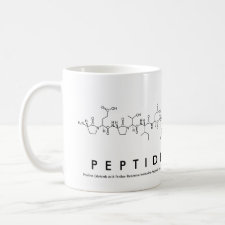Authors: Tian JS, Qin L, Li DD, Qin SN, Gao WH, Jia YM
Article Title: Carbofuran-imprinted sensor based on a modified electrode and prepared via combined multiple technologies: Preparation process, performance evaluation, and application.
Publication date: 2021
Journal: Electrochimica Acta
Article Number: 139600.
DOI: 10.1016/j.electacta.2021.139600
Alternative URL: https://www.sciencedirect.com/science/article/pii/S0013468621018843
Abstract: Carbofuran (CBF) is a highly toxic pesticide that has been classified as hazardous to humans; however, it is still used in agriculture because of its high efficiency and low cost. Therefore, the detection of CBF is critical for consumer health and environmental quality issues. In this study, a nanomaterial-modified molecularly imprinted electrochemical sensor (MIECS) for CBF detection was prepared based on self-assembly and electropolymerization. The sensor was analyzed via electrochemical methods, computer simulation, and ultraviolet spectroscopy. Carbofuran was used as the template molecule and 4-hydroxythiophenol (4-HTP) as the functional monomer. Reduced graphene oxide (RGO) and Au-nanoparticles (AuNps) were used to modify a working electrode layer by layer. First, 4-HTP was self-assembled on the surface of the Au-nanoparticle modified layer using Au-S bonds. Then 4-HTP was self-assembled around the CBF using hydrogen bonding. Finally, the CBF molecularly imprinted polymer membrane was prepared by electropolymerization, and the template molecules were eluted using ethanol (75 vol%) and 0.4 mol/L NaOH solution (25 vol%). Through the use of the template molecules, the molecularly imprinted electrochemistry sensor for CBF detection was successfully constructed. In the experiment, Gaussian 09 at the density functional theory level of M06-2X/6-31g(d) was used to screen the functional monomers and optimize the configurations of the template molecule and functional monomer complex, and the action forms and mechanism of the template and monomer were analyzed using a simulation with Gaussian 09. The imprinted effect and selection performance of the sensor were studied using cyclic voltammetry (CV) and square-wave voltammetry (SWV). The imprinted sensor was applied for the rapid detection of CBF in foods. The results showed that the template molecule and functional monomer interacted through hydrogen bonding, and this formed a CBF-4(4-HTP) complex. The sensor showed a good performance. It specifically recognized the template molecule and its structural analogs. The linear response range of the CBF was 1.0 × 10-9 - 1.0 × 10-5 mol/L, with a good linear relationship (R2 = 0.9994). The detection limit was 3.3 × 10-10 mol/L. The recoveries were between 95.20% and 105.45%, and the relative standard deviations were 0.48%-2.40%. The sensor has the advantages of low cost, good selectivity and stability, high sensitivity, and accurate and rapid detection. It is suitable for the sensitive and rapid detection of carbofuran residues in foods
Author keywords: Carbofuran, Nano Modification Material, Self-Assembled Membrane, Molecularly imprinted polymer, electrochemical sensor, rapid detection



Join the Society for Molecular Imprinting

New items RSS feed
Sign-up for e-mail updates:
Choose between receiving an occasional newsletter or more frequent e-mail alerts.
Click here to go to the sign-up page.
Is your name elemental or peptidic? Enter your name and find out by clicking either of the buttons below!
Other products you may like:
 MIPdatabase
MIPdatabase









